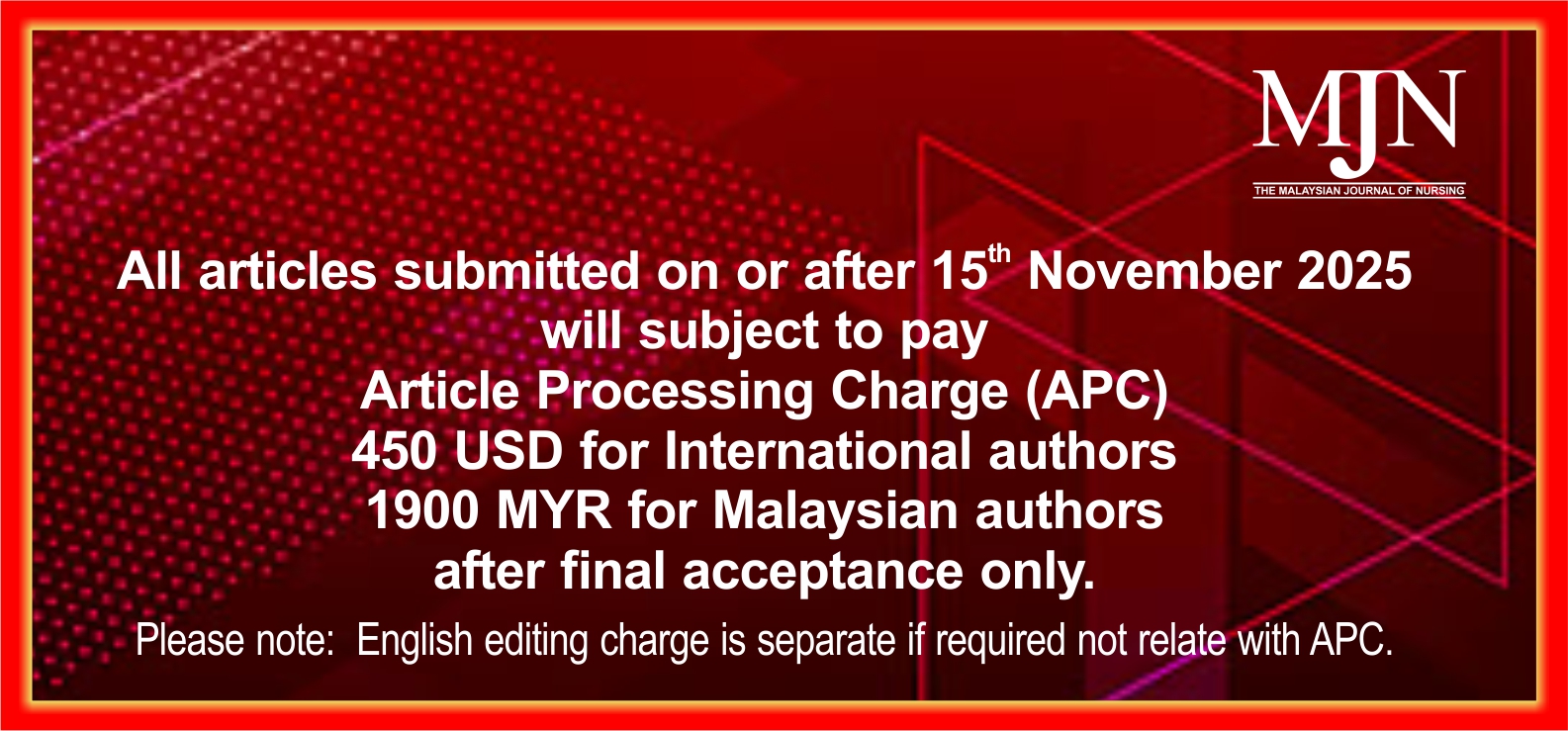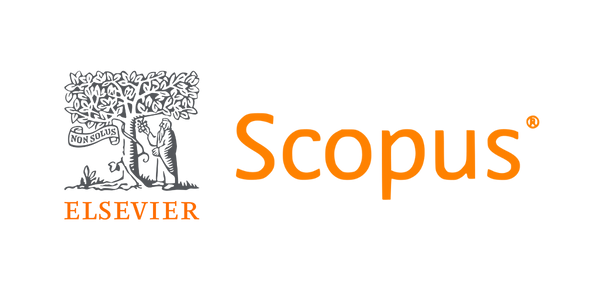The Use of Foetal Movement Cards and Happy Tummy Applications against Anxiety among Pregnant Mothers in Trimester III at the Cisoka Health Center, Tangerang, Indonesia
DOI:
https://doi.org/10.31674/mjn.2024.v16i02.020Abstract
Introduction: Foetal well-being refers to the condition of the foetus being in a good and healthy state, as measured by heart rate and foetal movement. Regularly counting foetal movements, a subjective measure, can reduce anxiety among expectant mothers. The purpose of this study is to analyse the effectiveness of using the Foetal Movement Card (FMC) and the Happy Tummy Application (HTA) in reducing anxiety among mothers in their third trimester. Methods: This study uses a quasi-experimental design without a control group. The sample consisted of 60 respondents, divided into the FMC and HTA groups, using accidental sampling in July 2023 at the Cisoka Health Centre. Data collection tools included HAR's anxiety questionnaires, FMC, and the HTA. A paired t-test was used to measure anxiety levels before and after using the tools, and the Mann-Whitney Test was used to compare the two groups. Results: The study showed that 24 participants (80%) were adherent, while 6 participants (20%) did not comply with using the FMC. In the HTA group, 26 participants (86.7%) complied, while 4 participants (13.3%) did not. The mean anxiety level before using the FMC was 9.77, and after using it, the anxiety level decreased to 6.37. For the HTA, the mean anxiety level was 10.50 before use and 7.40 after use. The paired t-test results were 0.000 (<0.05), indicating a significant reduction in anxiety levels before and after using the FMC and HTA among third-trimester pregnant women at the Cisoka Health Centre. However, the Mann-Whitney test results showed an insignificant value of 0.492 (>0.05), suggesting no significant difference in compliance between the two groups. Conclusion: The use of the FMC and HTA effectively reduced anxiety in third-trimester pregnant women and can serve as an alternative method for monitoring foetal well-being. Consistency and attention in using these tools are essential, and the support of healthcare workers plays a crucial role in promoting health and preventing complications during pregnancy.
Keywords:
Anxiety, Happy Tummy Application, Foetal Movement Card, Foetal Well-BeingDownloads
References
Daly, L. M., Boyle, F. M., Gibbons, K., Le, H., Roberts, J., & Flenady, V. (2019). Mobile applications providing guidance about decreased fetal movement: Review and content analysis. Women and Birth, 32(3), e289-e296. https://doi.org/10.1016/j.wombi.2018.07.020
Ghimire, S., Martinez, S., Hartvigsen, G., & Gerdes, M. (2023). Virtual prenatal care: A systematic review of pregnant women's and healthcare professionals' experiences, needs, and preferences for quality care. International Journal of Medical Informatics, 170. https://doi.org/10.1016/j.ijmedinf.2022.104964
Ghosh, A. K., Catelli, D. S., Wilson, S., Nowlan, N. C., & Vaidyanathan, R. (2024). Multi-modal detection of fetal movements using a wearable monitor. Information Fusion, 103, 102124. https://doi.org/10.1016/j.inffus.2023.102124
Kemenkes, R. I. (2019). Profil kesehatan indonesia 2015. Jakarta: kemenkes RI, 2016 [Indonesian health profile 2015. Jakarta: Indonesian Ministry of Health, 2016]. https://drive.google.com/file/d/1hqjL9FV8pNkgBKLN6Q9jA_JKkFk6c0eT/view. Accessed on 22th February, 2024.
Kumar, S., Yatam, S., Patange, R. P., Laddad, M., & Patil, A. (2024). Assessing the impact of first trimester maternal body mass index and gestational weight gain on fetomaternal outcomes: A prospective cohort study. Obstetrics and Gynaecology Forum, 34(4), 37-59. https://hdl.handle.net/10520/ejc-medog_v34_n4_a5 . Accessed on 24th January, 2024.
Laddad, M., Shrivastava, A., Patange, R. P., Laddadv, M., & Kumar, S. (2024). Correlation analysis of fetal kidney dimensions in the third trimester unraveling developmental patterns across gestational ages. Obstetrics and Gynaecology Forum, 34(2), 1-8. https://www.obstetricsandgynaecologyforum.com/index.php/ogf . Accessed on 20th December, 2024.
Lai, J., Nowlan, N. C., Vaidyanathan, R., Shaw, C. J., & Lees, C. C. (2016). Fetal movements as a predictor of health. Acta Obstetricia et Gynecologica Scandinavica, 95(9), 968-975. https://doi.org/10.1111/aogs.12944
Latif, R.A. (2018). Prevalence of depression, anxiety and stress among post-natal mothers having Low Birth Weight (LBW) Infants. Malaysian Journal of Medical Research (MJMR), 2(2), 18-29. https://doi.org/10.31674/mjmr.2018.v02i02.004
Li, S., Yang, Q., Niu, S., & Liu, Y. (2023). Effectiveness of remote fetal monitoring on maternal-fetal outcomes: Systematic review and meta-analysis. JMIR Mhealth and Uhealth, 11(1). https://doi.org/10.2196/41508
Lu, X., Powell, J. E., Agapie, E., Chen, Y., & Epstein, D. A. (2024). Examining the social aspects of pregnancy tracking applications. Proceedings of the ACM on Human-Computer Interaction, 8(CSCW1), 1-30. https://doi.org/10.1145/363732
Novita, R. V. T., Acihayati, J. P., & Pratiwi, H. (2023). Penyuluhan dan pendampingan ibu hamil untuk pemantauan gerak harian janin menggunakan kartu dan aplikasi happy tummy di Menteng, Jakarta [Counseling and assistance to pregnant women in monitoring daily fetal movements using happy tummy cards and applications in Menteng, Jakarta]. Asawika: Media Sosialisasi Abdimas Widya Karya, 8(1), 1-6. https://doi.org/10.37832/asawika.v8i1.123
Oepkes, D., & Sueters, M. (2017). Antenatal foetal surveillance in multiple pregnancies. Best Practice & Research Clinical Obstetrics & Gynaecology, 38, 59-70. https://doi.org/10.1016/j.bpobgyn.2016.09.004
O'neill, E., & Thorp, J. (2012). Antepartum evaluation of the fetus and fetal well-being. Clinical Obstetrics and Gynecology, 55(3), 722-730. https://doi.org/10.1097/GRF.0b013e318253b318
Patil, S. K. S., Yatam, S., Patange, R. P., Laddad, M., & Patil, A. (2024). Assessing the impact of first trimester maternal body mass index and gestational weight gain on fetomaternal outcomes: A prospective cohort study. Obstetrics and Gynaecology Forum, 34(1), 61-69. https://doi.org/10.21276/obgyn.2023.9.2.6
Polit, D. F., & Beck, C. T. (2010). Essentials of Nursing Research: Appraising Evidence for Nursing Practice. 7th Edition, Wolters Kluwer Health/Lippincott Williams & Wilkins, Philadelphia. https://www.scirp.org/reference/referencespapers?referenceid=1426133 . Accessed on 24th February, 2024.
Pouriayevali, B., Ehteshami, A., Kohan, S., & Saghaeiannejad Isfahani, S. (2023). Mothers' views on mobile health in self-care for pregnancy: A step towards mobile application development. Journal of Education and Health Promotion, 12. https://doi.org/10.4103/jehp.jehp_534_22
Salavati, N., Smies, M., Ganzevoort, W., Charles, A. K., Erwich, J. J., Plösch, T., & Gordijn, S. J. (2019). The possible role of placental morphometry in the detection of fetal growth restriction. Frontiers in Physiology, 9. https://doi.org/10.3389/fphys.2018.01884
Skelton, E., Cromb, D., Smith, A., Harrison, G., Rutherford, M., Malamateniou, C., & Ayers, S. (2024). The influence of antenatal imaging on prenatal bonding in uncomplicated pregnancies: A mixed methods analysis. BMC Pregnancy and Childbirth, 24, 1-15. https://doi.org/10.1186/s12884-024-06469-0
Smith, V., Muldoon, K., Brady, V., & Delaney, H. (2021). Assessing fetal movements in pregnancy: A qualitative evidence synthesis of women’s views, perspectives and experiences. BMC Pregnancy and Childbirth, 21, 1-14. https://doi.org/10.1186/s12884-021-03667-y
Tunçalp, Ӧ., Pena-Rosas, J. P., Lawrie, T., Bucagu, M., Oladapo, O. T., Portela, A., & Gülmezoglu, A. M. (2017). WHO recommendations on antenatal care for a positive pregnancy experience-going beyond survival. British Journal of Obstetrics and Gynaecology (BJOG), 124(6), 860-862. https://doi.org//10.1111/1471-0528.14599
WHO recommendations on antenatal care for a positive pregnancy experience. Geneva, Switzerland: World Health Organization. https://iris.who.int/bitstream/handle/10665/250796/97892415?sequence=1. Accessed on 24th January, 2024.
Yeoh, P. L., Hornetz, K., & Dahlui, M. (2016). Antenatal care utilisation and content between low-risk and high-risk pregnant women. PLoS One, 11(3). https://doi.org/10.1371/journal.pone.0152167
Published
How to Cite
Issue
Section
License
Copyright (c) 2024 The Malaysian Journal of Nursing (MJN)

This work is licensed under a Creative Commons Attribution-NonCommercial-NoDerivatives 4.0 International License.



































